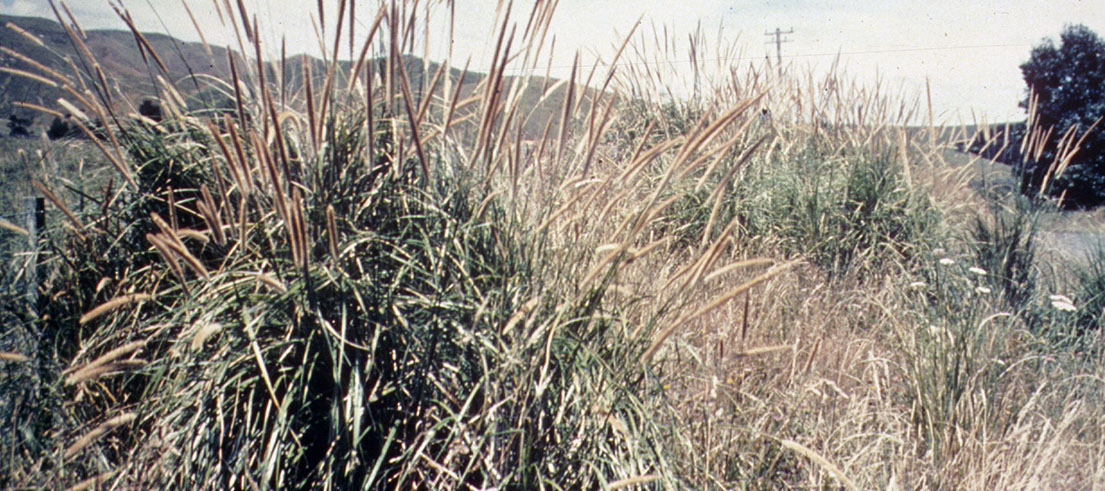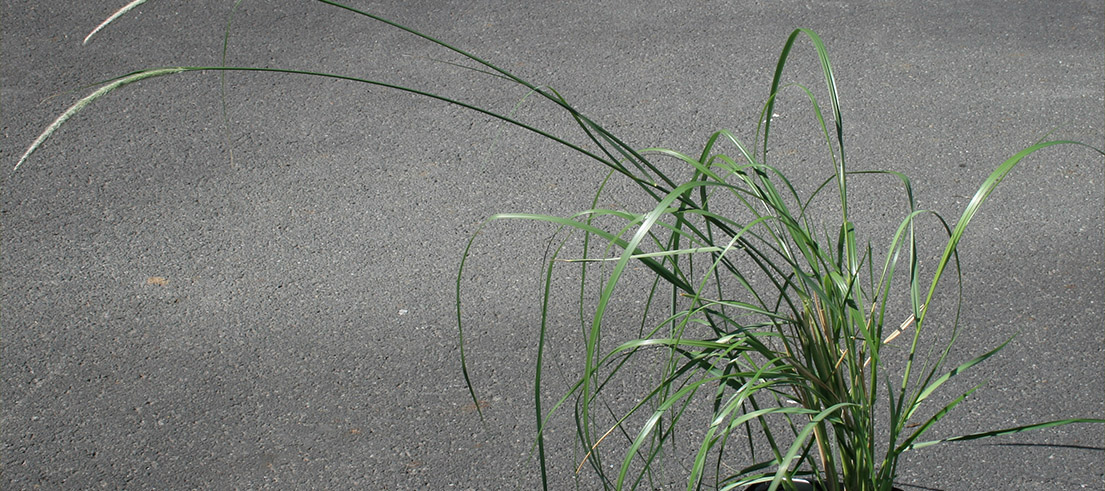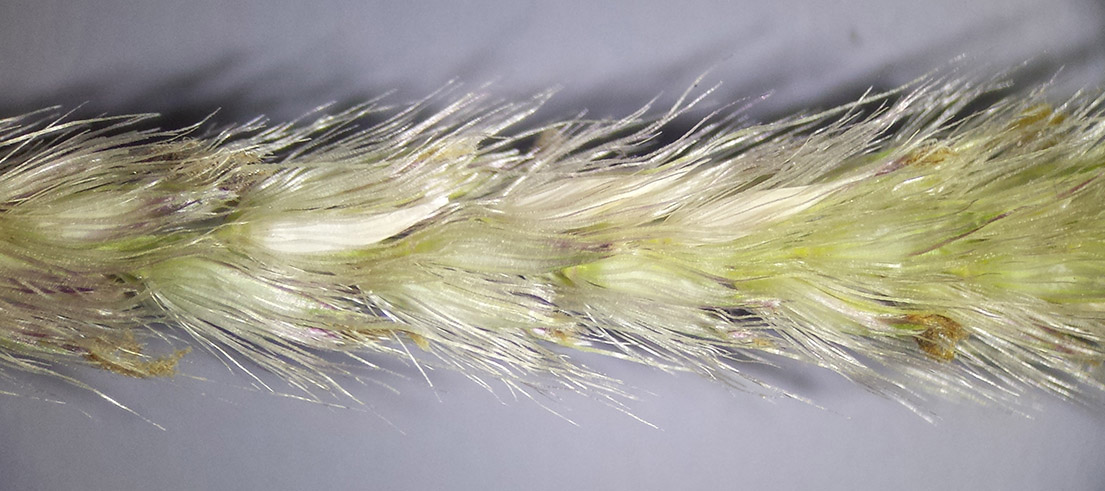African feather grass is a tufted perennial grass that grows to 90cm high with a feathery flower head.
Description
- Stems are upright, growing to 90cm high.
- Leaves are light to blue-ish green, flat or folded, ribbed, and rough to touch.
- They are sometimes hairy at and towards the base with finely serrated edges (up to six leaves per stem).
- Spike-like seed-heads (up to 11cm long) are light silvery green or light brown in colour and very feathery.
- Seed-heads contain large numbers of densely packed flower spikelet clusters.
- Each flower spikelet cluster is surrounded by numerous feathery unequal bristles (25-40 mm long).
- Seeds are spread via water and by wind for short distances, and also in clothing, animals,pelts.
- Also spreads via rhizome fragments from human activity (eg. soil movement, dumped garden waste, cultivation, and on machinery)
- Habitats include disturbed soils, especially sandy loams, on degraded pastures, roadsides, footpaths, creek banks, and neglected areas.
What you need to know
African feather grass forms dense clumps that will invade riparian vegetation. It is unpalatable to livestock.
Management approach
This is a declared pest managed under the Canterbury Regional Management Plan 2018 – 2038 (PDF file, 10.6MB) within the progressive containment programme.
Progressive containment
Pests in the progressive containment programme are present in low numbers or have limited distribution in Waitaha/Canterbury but have the potential to be highly damaging if they were to become widespread.
Progressively containing these pests, by reducing their distribution over time, is a cost-effective approach to prevent their more extensive spread and impact within the region.
African feather grass is also declared an unwanted organism by the Ministry for Primary Industries (MPI) because it is capable of causing harm to the natural environment, physical resources or human health in Aotearoa/New Zealand.
These species pose a high risk to our environment, economy, recreation, and cultural values.
Rules
Any species declared a pest cannot be sold or be in a place where plants are being sold. Pest plants cannot be propagated, bred, multiplied, communicated, released, caused to be released, or otherwise spread.
Control
Do not attempt to undertake control of African feather grass yourself. Report any sightings to us.












